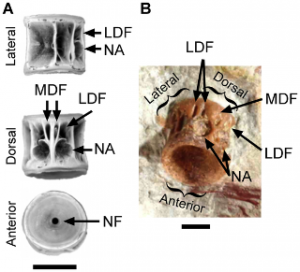The carnivorous Tyrannosauridae are among the most iconic dinosaurs: typified by large body size, tiny forelimbs, and massive robust skulls with laterally thickened teeth. The recently described small-bodied tyrannosaurid Raptorex kreigsteini is exceptional as its discovery proposes that many of the distinctive anatomical traits of derived tyrannosaurids were acquired in the Early Cretaceous, before the evolution of large body size. This inference depends on two core interpretations: that the holotype (LH PV18) derives from the Lower Cretaceous of China, and that despite its small size, it is a subadult or young adult. Here we show that the published data is equivocal regarding stratigraphic position and that ontogenetic reanalysis shows there is no reason to conclude that LH PV18 has reached this level of maturity. The probable juvenile status of LH PV18 makes its use as a holotype unreliable, since diagnostic features of Raptorex may be symptomatic of its immature status, rather than its actual phylogenetic position. These findings are consistent with the original sale description of LH PV18 as a juvenile Tarbosaurus from the Upper Cretaceous of Mongolia. Consequently, we suggest that there is currently no evidence to support the conclusion that tyrannosaurid skeletal design first evolved in the Early Cretaceous at small body size.

Comparison of the LH PV18 fish centrum (D) to an ellimmichthyiform centrum (A–C) (Horseshoeichthyes) from the Dinosaur Park Formation (Campanian) of Alberta.
The researchers concluded as LH PV18 cannot be demonstrated to be from the Lower Cretaceous, therefore the conclusion that derived features of tyrannosaurids evolved before the Late Cretaceous cannot be supported. As histology demonstrates that LH PV18 is immature then the conclusion that typical tyrannosaurid features evolved at a small size also cannot be supported, since the small size of LH PV18 is more likely the result of its immature status. Furthermore, the probable juvenile status of LH PV18 makes its use as a holotype unreliable, since diagnostic features of Raptorex may be symptomatic of its immature status, rather than its actual phylogenetic position. Unless stronger evidence is presented, Raptorex should be considered a nomen dubium. LH PV18 more likely represents the juvenile of a larger tyrannosaurid from the Late Cretaceous of Mongolia, such as Tarbosaurus (as per its original sale description), although testing of this hypothesis awaits description of new specimens of immature tyrannosaurids.
Misidentification of immature dinosaur specimens as new taxa is a persistent and increasingly pervasive problem that can be detected and diagnosed only by thorough and proper histological analysis. Combined ontogenetic and stratigraphic analyses have great potential to reveal new information on the mode and tempo of dinosaur evolution, but as this reanalysis exemplifies, such studies must be based upon solid and replicable data.
Citation: Fowler DW, Woodward HN, Freedman EA, Larson PL, Horner JR (2011) Reanalysis of “Raptorex kriegsteini”: A Juvenile Tyrannosaurid Dinosaur from Mongolia. PLoS ONE 6(6): e21376. doi:10.1371/journal.pone.0021376
Editor: Anjali Goswami, University College London, United Kingdom



 March 9th, 2013
March 9th, 2013  Riffin
Riffin  Posted in
Posted in  Tags:
Tags: 